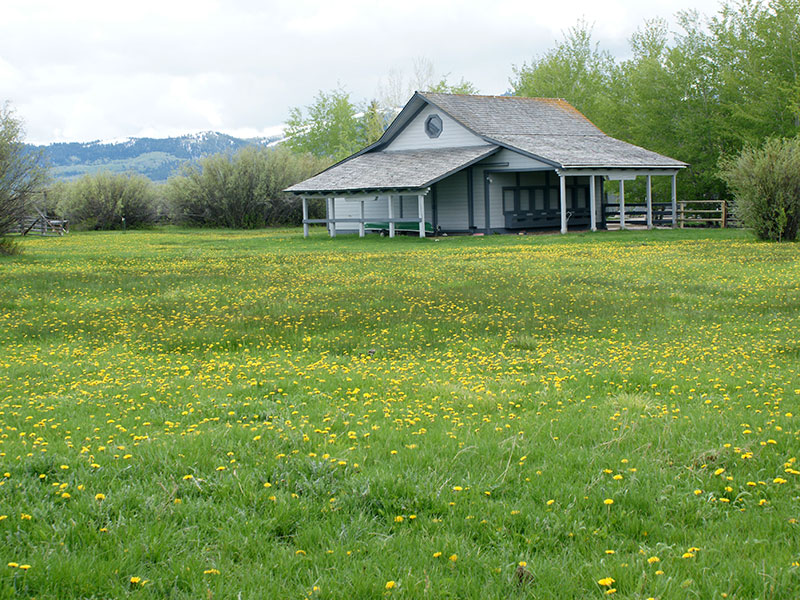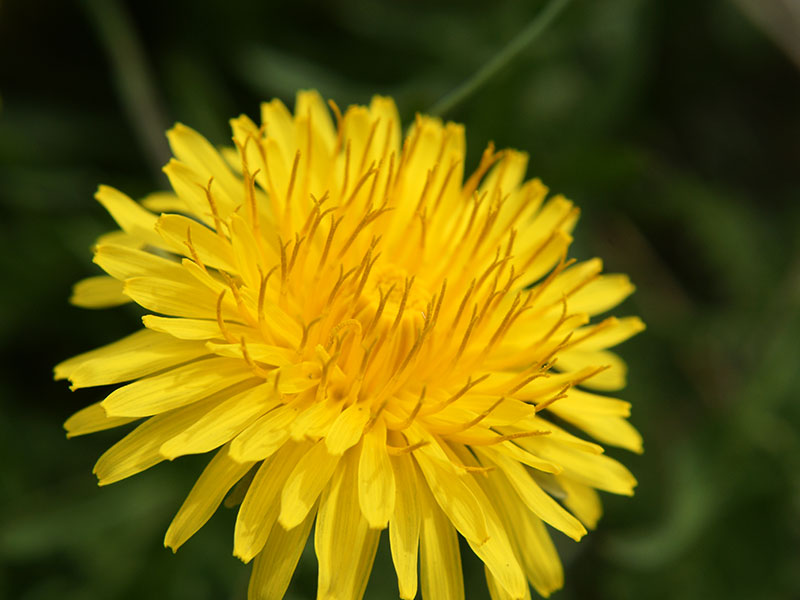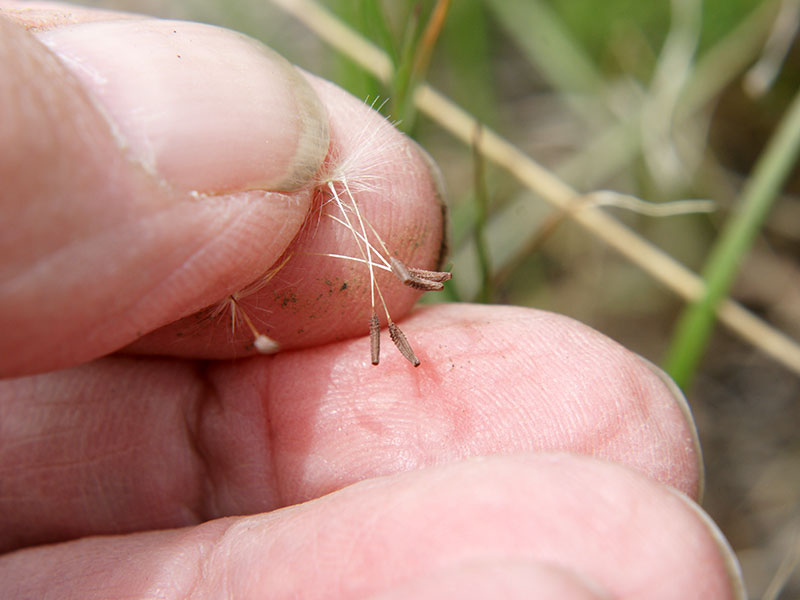Taraxacum officinale / dandelion
- rosette growth habit with lobed leaves
- yellow dandelion-like flowers – composites with only ray florets
- only one flower head per stem
- characteristic puff-ball seedheads
- found anywhere and anytime
Also known as: blowball, faceclock, chicoria, consuelda, pissabed, swine’s snout, lǒwenzahn, agriomoroulia, pikraphake, earth nail, golden hair, pu gong ying, yellow gowan, fortune-teller, wild endive, bitterwort, Irish daisy, cankerwort, Fr.: Dent de Lion, Pissenlit. Ital.: Tarapaeo, Macerone. Span.: Diente de leon. Port.: Dente de leao. Germ.: Lowenrahn, Pfaffenrohrlein. Dut.: Pardebloem, Zeenwenand. Swed.: Legontand, Maskrason
I am including dandelions in this collection because a number of the other species blurbs refer to them… as in “dandelion-like” or false-dandelion. Basically, I would say that if you have never seen a dandelion, you may not be from this planet. Still, they are actually quite an interesting little weed. I’ll make this a bit long because they are good illustrations of lots of things.
For some reason, systematists and taxonomists have shown an inordinate amount of interest in dandelions, perhaps an outcome of lying on a yellow hillside on a warm spring day and wanting to call it “working”. In any case, the taxonomy of this genus has been complicated by the recognition of numerous species, subspecies and microspecies (70 of these in Germany alone). There are now also “improved varieties.” Wikipedia lists 12 Latin synonyms which I have not included here (although their history is also “fascinating”).
Dandelions are perennial members of the Asteraceae, and hence have composite inflorescences. Pick a dandelion (or flip back and forth in the gallery) and follow along; you’ll get a better idea of what all the terminology means. In this case, the blossoms lack disk florets and are made entirely of ray florets. They are, of course, yellow and are held above the vegetative rosette by a fleshy or squishy, pink-ish stalk. At the base of the blossom, there is a cuplike collection of bracts with the fun-to-say name, calyculi. Each flowering stem has a single flower head.
Despite the fact that each floret is bisexual and pollen production can be copious, the lineages found in North America are not fertile. It seems that the lines imported to this continent originally were triploid and produce seeds only by apomixis. Although they are visited by many types of insects and are a critical early resource for honey production in the Valley, all of that is superfluous to the plants themselves. Interestingly, the southern European lineage – not introduced here – is diploid and fertile while diploid and triploid populations overlap in central and northern Europe.
At the flowering stage it is possible to grasp the flowering stalk firmly, place your thumbnail at the base of the calyculi and recite the following mantra, flicking your thumbnail upward to displace the inflorescence at what is the obviously appropriate time: “Mama had a baby and its head popped off”.
You can also, of course, use the inflorescence to paint your nose with pollen, to the delight of anyone under 5. Similarly, the infructescence (the white, puffy ball of fruits – usually called seeds) is fun to gently puff the seeds off or blow into the breeze.
The perennating part of a dandelion is a taproot. As anyone knows who has tried to extricate dandelions from a lawn, this taproot can be quite firmly anchored, and breaking it in the extrication process will result in a new shoot growing from the break. As many fewer people know, if you dig up, wash and dry the taproot, then crush it, it can serve as a non-caffeinated coffee substitute.
The dandelion leaf display is a fine example of a rosette, a circular collection of leaves at ground level. Break off a leaf and you will see that it exudes a white latex. Individual leaves can be as short as a couple inches, or as long as a foot and a half in good, fertile soil. They do have petioles – blending gently into the blade – and are longer than they are wide by perhaps four-fold. There are various names for this leaf shape, but the really visible thing about dandelion leaves is that the leaf margins are lobed, sometimes quite deeply, with teeth at the edges. Generally, these aren’t too sharp; at least I’ve never felt discomfort stepping on one in my bare feet.
The fruits of the dandelion form the well-known “blow-ball”. The individual fruits are achenes (i.e. a single seed with a paper-thin cover) with silky pappi (singular, pappus), which form the parachutes that float for long distances when blown away by the wind. And if you just happen to be more interested in physics than in botany (beyond, of course, knowing what you see when you hike), you might be interested to know that the physics of dandelion seed flight was resolved by a group of scientists at the University of Edinburgh (Scotland) in 2018. I guess physicists also like to sit in the spring sunshine and call it work.
Dandelions commonly colonize disturbed places, both by the windblown seeds and from the seed bank – previous year’s windblown seeds. The seeds in the bank remain viable for a decade or more. The seeds are also a common contaminant in crops and forage seeds. This species is largely indifferent to soil type, and withstands trampling, drought and flooding happily.
The most redeeming value of dandelions, other than making for pretty, yellow fields, is that all parts of the plant are edible and nutritious (high in Vitamins A and C). There are many recipes using them on the web. Of course, if you really need seeds (really?), you can also buy them on Amazon. You can find instructions for growing them (really?) here.
| Color | |
|---|---|
| Family | |
| Blossom size | |
| Inflorescence size | |
| Inflorescence type | |
| When? | |
| Where? |








